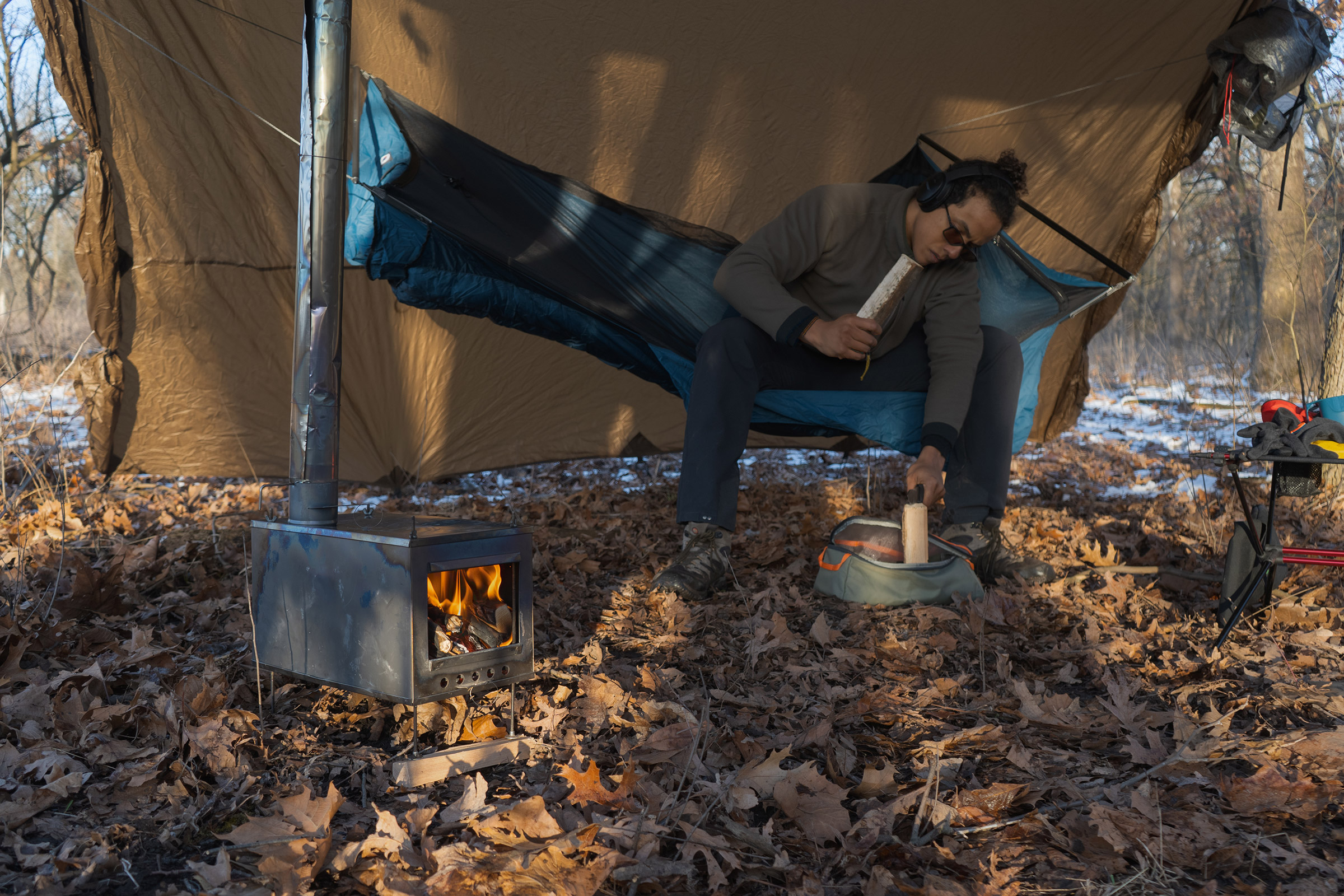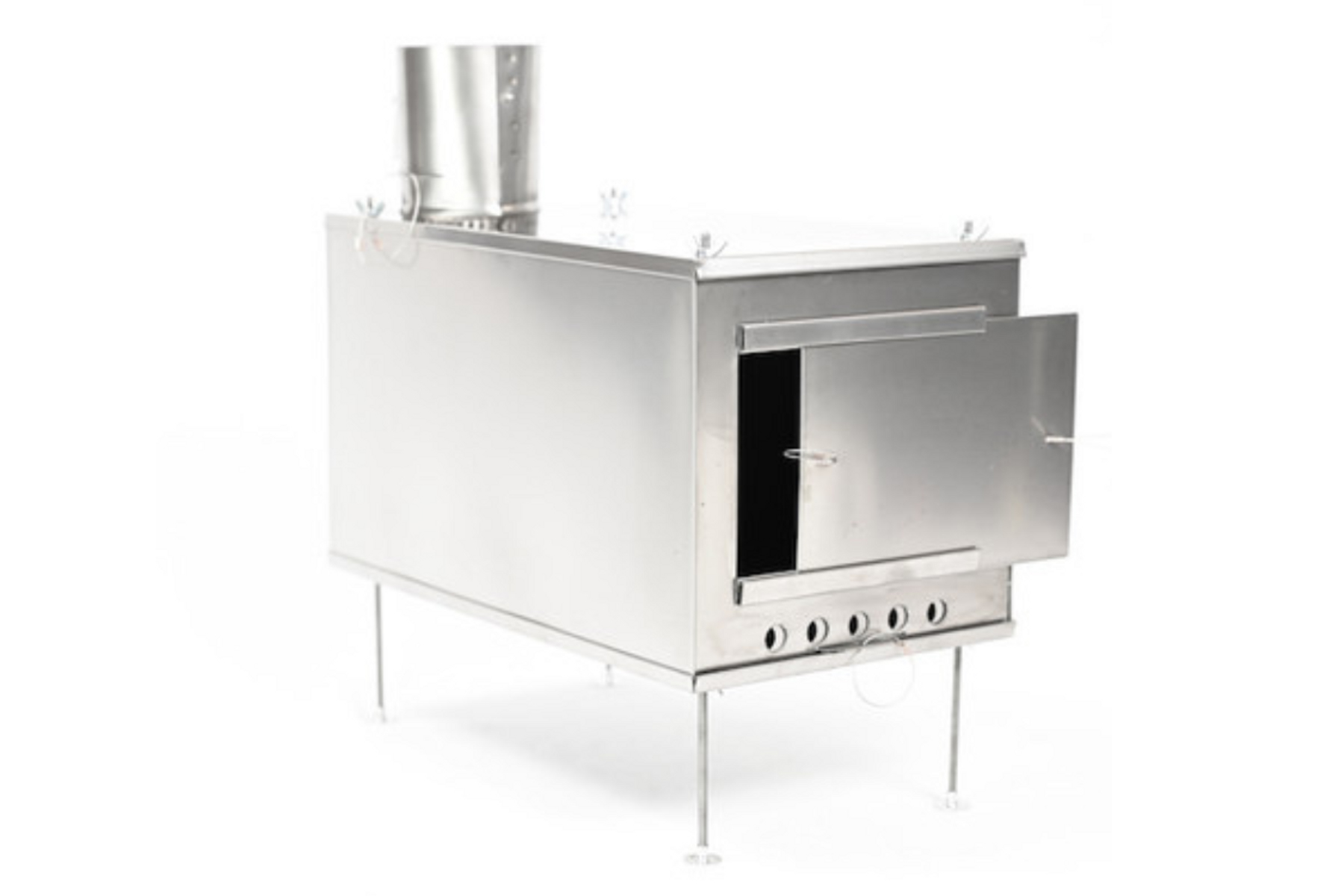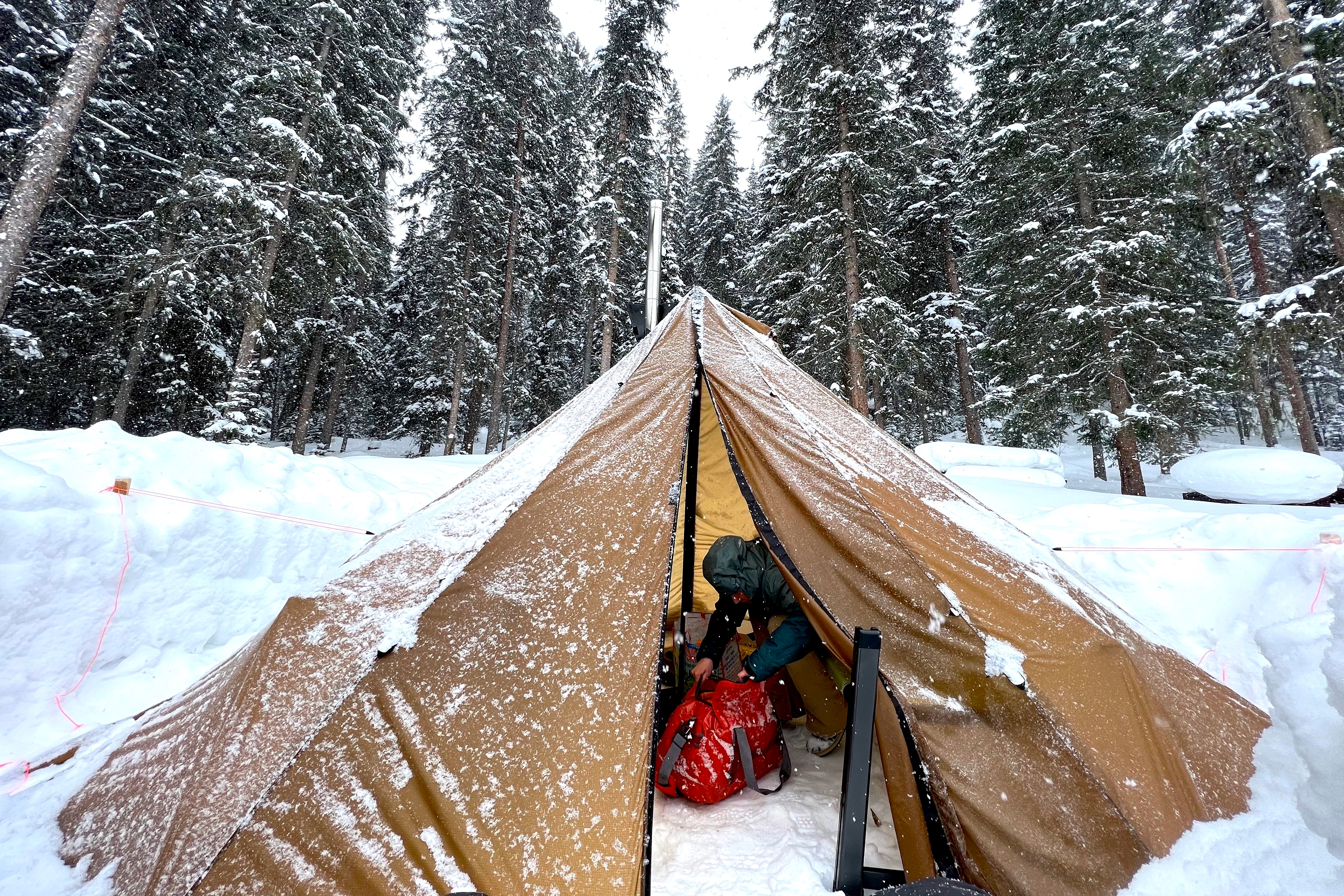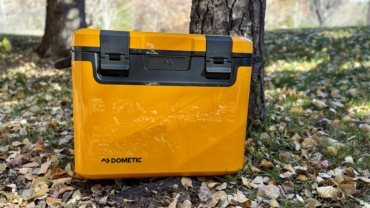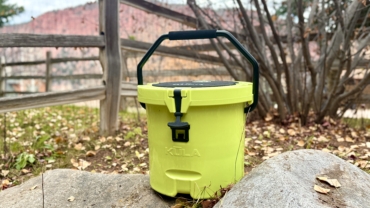I’ve got every reason to use hot tent stoves and I still have trouble justifying the cost. I don’t care much about weight. I prefer cooking proper meals to rehydrating bags. On bikepacking trips, I like having a massive hot tent tarp that can fit my bike, my hammock, and myself. All the better for drying my socks and repacking my bike out of the rain. Most of all, in a place with crowded campsites, winter is often my favorite camping season.
Even budget steel stoves start at around $200-300, weigh around 7-15 pounds, and require a bit of babying to keep rust-free. Titanium stoves can cut 35-50% of the weight, and make maintenance a bit easier. However, they don’t radiate heat as well, and can easily run around twice the price of steel stoves.
Starting at $355 for the stove alone, Seek Outside’s Large Titanium Tent Stove isn’t cheap. What it does offer is essentially three stoves in one, with a bevy of other accessories aside. Boasting the ability to be kitted out for different types of trips, it packs next-level bang for your buck in a truly lightweight package.
In short: Seek Outside’s Large Tent Stove is arguably the most modular hot tent stove on the market. The large is compatible with not only three different-size sides, enabling one to alter its weight and capacity, but also a bevy of accessories to boot. Simply put, as long as you’re not amid a burn ban, it can handle whatever mission you throw at it with lightweight versatility. The downside? Sometimes cutting weight means adding a learning curve.
- Medium U-Turn Sides weight: 25 oz., not including stovepipe
- Large U-Turn Sides weight: 26 oz., not including stovepipe
- Solid Sides weight: 35 oz., not including stovepipe
- Setup dimensions: 8.25” tall x 8.25” wide x 14" long
- Volume: 11 L with medium sides, 15 L with large sides
- Construction: All titanium
- Stovepipes: 5-13’ roll-up titanium pipe options
- Compatible accessories: Grill top, alternative sides, glass door
Pros
- Lightweight
- Multi-configurable
- Variable volume
- Numerous quality accessories
- Easy maintenance
- Good long-term value
Cons
- Relatively complex setup
- Easily tippable
- High upfront price
- Low radiative heating for its size
Seek Outside Hot Tent Stove Review
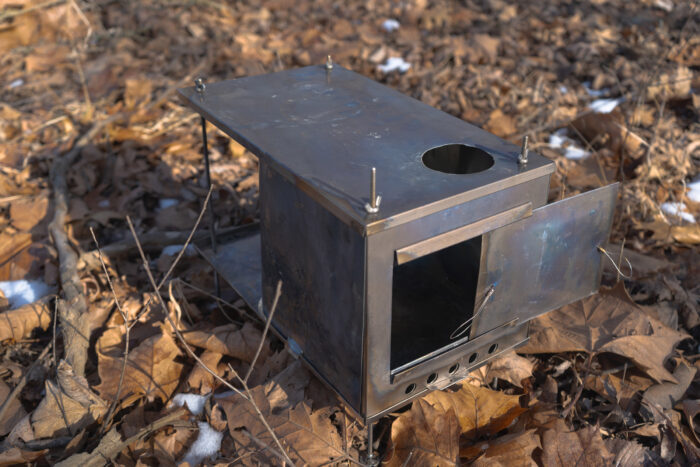
Most of Seek Outside’s products aim at the nexus of ultralight efficiency and hunting practicality. Its tent stoves are no exception.
The Seek Outside Large Tent Stove comes in two versions: Its standard version offers a relatively easy setup and enough strength to support any cookware south of cast iron. It weighs in just over 2 pounds.
Its U-Turn option trades traditional panel sides for thinner, rollable titanium foil, trading a bit of cooking capacity to save some 7.4 ounces.
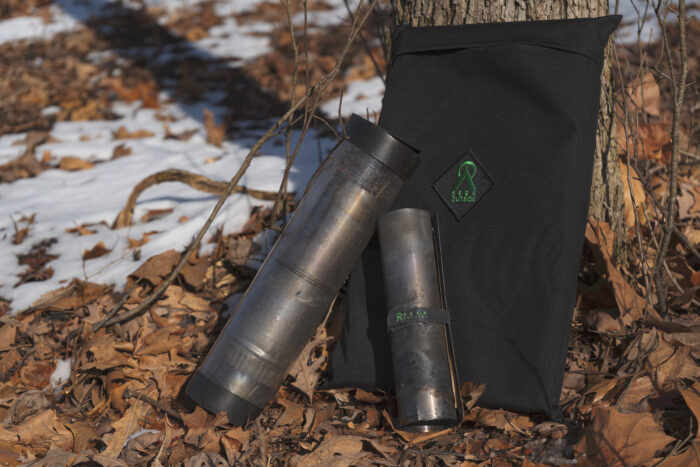
While Seek Outside doesn’t offer a kit to convert U-Turns into standard, they do offer the inverse. For $69, its conversion kit can turn a standard stove into a U-Turn. Seek Outside’s Large Tent Stove is also compatible with Medium U-Turn sides.
This means that by swapping between the large standard, large U-Turn, and medium U-Turn sides, one can choose a lightweight stove with a 15L firebox. You could also go for an ultralight 15L stove for weight-conscious heating, or an 11L ultralight tent stove for one-to-two-person shelters and lower wood consumption.
Granted, $483 sans stovepipe isn’t cheap, but it is on par with many single stoves. And three stoves for the price of one or two is a hell of a deal.
Variable Setup, Various Learning Curves

My first time setting up the U-Turn version of the stove was with trembling cold hands. The sun was streaking over the horizon, chased down by temperatures racing into double-digit negatives. It was heralded by my cavalcade of profanity as I realized that I didn’t bring the large U-Turn sides. I had medium-size sides and a massive shelter that I needed to heat. (The joy of busy weeks with little time for prep.)
The conditions were less than ideal.
Standard Configuration
If your first time setting up Seek Outside’s Large Tent stove is in the backyard, it’s a breeze. With the standard sides, simply slot them all into each other. Situate the base and top. Run the legs through the stove. Lock them in place with the wingnuts. Unroll the stovepipe and reroll it vertically. Voilà — you have a hot tent stove.
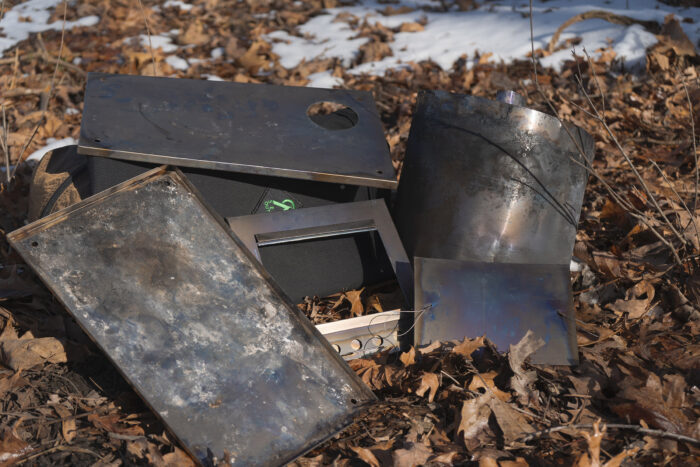
Medium & Large U-Turn Configurations
The tradeoff for the weight savings of the U-Turn sides is a more complex setup. The first time you set it up, you have to fight the memory of the tightly rolled foil sides and stovepipe, which makes them want to spring back into a roll.
However, there are easy fixes. Getting the wingnuts in place on the legs first and an inaugural burn in the stove before heading out into the field makes setup substantially easier.
Opting for the medium sides on a large stove? Remember to set up the top in reverse, with the stove jack positioned to the front, so, unlike me, you don’t have to reassemble the stove halfway through.
As with any roll-up hot tent stovepipe, longer lengths mean a harder setup. It also means more creosote to clean in the morning. A pair of gloves you don’t care about getting dirty, and that won’t get easily cut by the thin edges of the pipe, really streamlines setup.
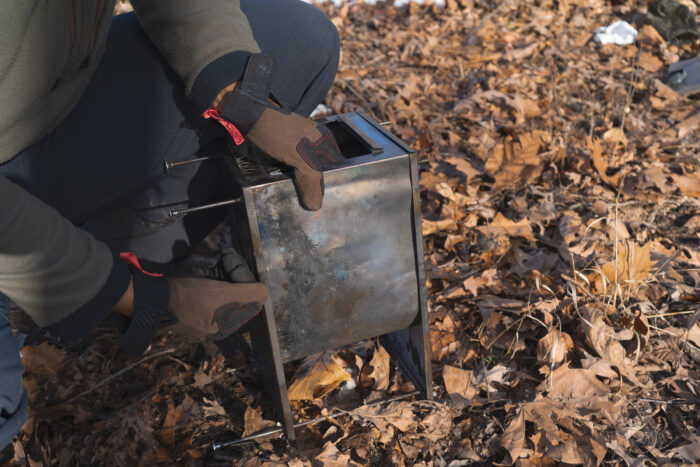
Leveling the Legs
The stove’s minimalist legs come with pros and cons. They are tippier than the angled, folding legs of your Winnerwell and Pomoly-style tent stoves. They also take longer to set up and have small base pieces and wing nuts that are easily lost. (Word to the wise, bring extra, just in case.)
Fortunately, they not only save weight but can also be adjusted individually to account for uneven ground. They also let you adjust the height of the stove, lowering it to the ground for more stability in high winds, or during heavy cooking — or raising it to give you room for drying out wood beneath it.
Ultimately, after only three nights and just as many burns, my total setup time went from 30 frigid minutes to all of 10-15 minutes. That was regardless of the U-Turn sides I opted to use.
Frigid Flexibility

I threw Seek Outside’s Tent Stove into the deep end immediately. I was testing the furthest extremes of a budget-friendly hammock hot tent, and I hung the shelter a touch too high. That left a drafty 1-2-inch gap around the bottom.
Running the medium sides, which reduced the stove’s volume to around 11 L, wouldn’t have been my first choice. Less volume for wood meant more frequent stockings. In those temperatures, it took five or six refills of wood to get me through the night.
Moreover, while titanium offers great weight savings, it isn’t a great heat conductor. With no glass viewport or steel parts, the stove took a hit in heat conduction.
However, the thinner foil sides allowed the stove to radiate more heat than a titanium stove of its size normally would. Even with the medium sides, in a drafty three-to-four-person shelter, I still got up to a 30-degree temperature difference between inside and outside. In two-to-three-person shelters, this configuration kept me plenty cozy while reducing my wood consumption.
Heating Food and Cooking
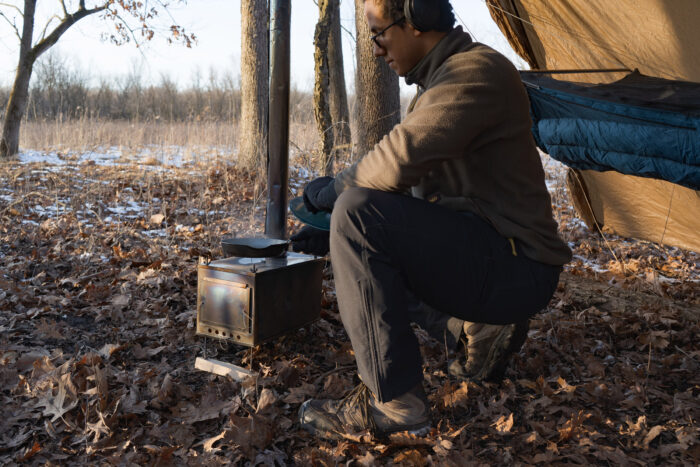
With the medium sides also only taking up around 70% of the area of the base plate, I was left with a space behind the burn chamber that I could use as a heated tray. Some nights I’d put two cups full of water there. Instead of frozen bottles, I woke up to a warm tea.
Both the medium and large U-Turn sides, when set up correctly, were plenty capable of supporting 4-5 pounds of cookery on top. The latter would certainly be a better choice for bigger meals. With a titanium top typically running a bit cooler than a steel one, a larger burn chamber and wider-base cookware make for fast cooking. More than once, on a trip with a buddy, I caught my wide-bottom Sea to Summit X-Pot Kettle boiling twice as fast as its cup.
On buddy trips, however, the standard sides quickly became my favorite. While I would be hesitant to throw a cast iron skillet on it, it will handle anything short of that. It’s also compatible with a grill top.
The thicker sides do conduct slightly less heat than the foil ones. However, they are easier to set up with gloves on and seal better against the base — offering the greatest burn time. Even on long nights, I rarely had to stoke the fire more than three or four times.
Seek Outside Tent Stove: Cozy, Cost-Wise Conclusions
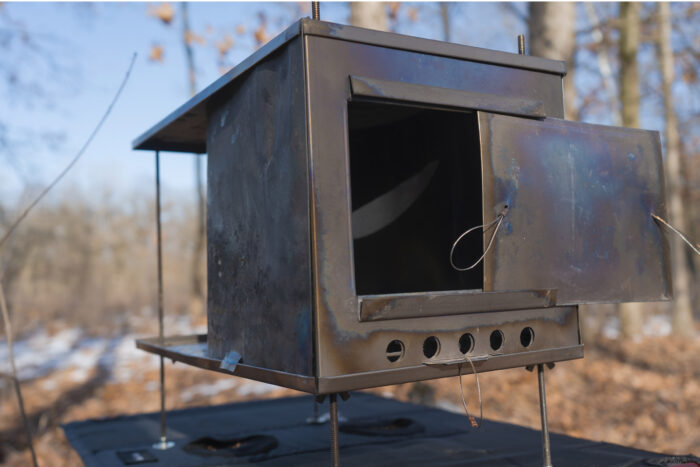
Seek Outside’s Large Hot Tent Stove has a learning curve. Its setup is more involved than the folding tent stoves that dominate much of the marketplace. Upfront, it’s by no means cheap. Nevertheless, its unrivaled modularity and breadth of accessories easily make it the most versatile hot tent stove I’ve ever used or come across.
On my most frigid camping trips, I can swap the standard door with a glass one to offer a big boost in radiative heating. I can throw on a utility tray where I can keep my water so it doesn’t freeze. If I want to compensate for the extra weight, I can simply opt for the large U-Turn stove sides and save 7 ounces.
On rafting voyages, fishing trips, and buddy hikes, opting for the solid sides easily lets me swap the top for an 8″x10” grill grate. That’s a perfect size for grilling catfish and sauteeing some onions in étouffée sauce for shoreside tacos.
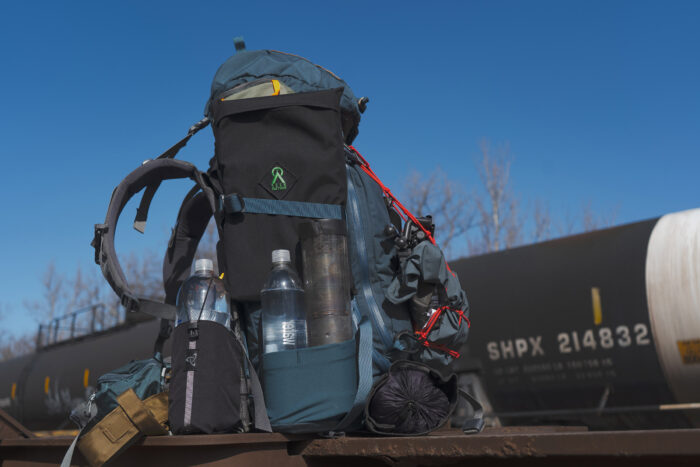
For an upcoming bikepacking trip through the Ozarks, I’ll be carrying the large stove with the medium sides. In Southern early spring weather, the smaller volume configuration will still kick out plenty enough heat and smoke for me to dry out wet clothes and drive mosquitoes away from my favorite hammock.
Simply put, Seek Outside’s Large Tent Stove is a stove for every occasion short of a burn ban. With Medium U-Turn sides, the stove is economical and nigh on ultralight. Throw on the Large U-Turn sides, and it’s a lightweight, cooking-practical stove for three-to-five-person shelters. Opt for the stock standard sides, and it’s a beastly flex pick.
Granted, I’m an obsessive for modularity, but three stoves in one? Until someone beats that, Seek Outside’s Large is my go-to for tent stoves — not only in the depths of winter, but also for a variety of different types of trips throughout the year.
